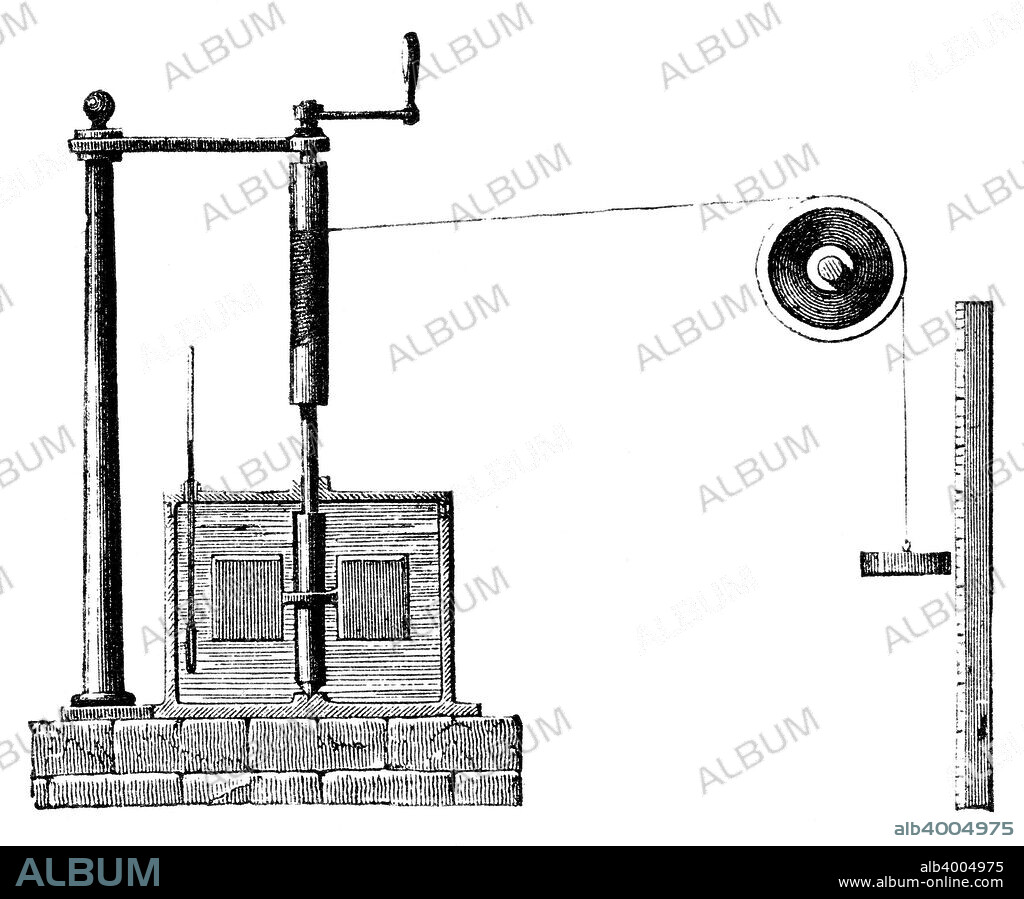alb4004975
Joule's apparatus for determining the mechanical equivalent of heat, 1872. Artist: Unknown

|
Add to another lightbox |
|
Add to another lightbox |



Buy this image.
Select the use:

Title:
Joule's apparatus for determining the mechanical equivalent of heat, 1872. Artist: Unknown
Caption:
Joule's apparatus for determining the mechanical equivalent of heat, 1872. A vessel of water, oil or mercury encloses vanes attached to a spindle. Cord is wound round the cylinder and drum. The weight descending against the scale rotates the spindle and vanes. Raising and lowering the weight raises the temperature of the fluid. From the rise in temperature and the distance travelled, the energy used can be calculated. British physicist James Prescott Joule (1818-1889) determined the mechanical equivalent of heat. The unit of energy called the joule is named after him.
Credit:
Album / Oxford Science Archive / Heritage Images
Releases:
Model: No - Property: No
Rights questions?
Rights questions?
Image size:
3573 x 2953 px | 30.2 MB
Print size:
30.3 x 25.0 cm | 11.9 x 9.8 in (300 dpi)
Keywords:
19TH CENTURY • B & W • B / W • B&W • BLACK & WHITE • BLACK AND WHITE • CENTURY • CONCEPT • ENERGIA • ENERGY • ENGRAVING • EXPERIENCE • EXPERIMENT CONSTRUCTION = SETTING UP EXPERIMENT • EXPERIMENT CONSTRUCTION • EXPERIMENT • HEAT • HOT WEATHER • JAMES JOULE • JAMES PRESCOTT JOULE • JAMES PRESCOTT • JAMES • JOULE • LIQUID • MEASUREMENT • MECHANICAL • MONOCHROMATIC • MONOCHROME • NINETEENTH CENTURY • PHYSICS • SCIENCE • SETTING UP EXPERIMENT • TEMPERATURE • WARMTH • WEIGHT
 Pinterest
Pinterest Twitter
Twitter Facebook
Facebook Copy link
Copy link Email
Email
